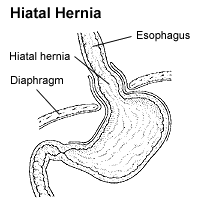
Photo from wikipedia
Introduction Laparoscopic inguinal hernia repair has significantly reduced the incidence of postoperative acute and chronic pain compared to open repair, but it remains problematic. This study’s purpose was to retrospectively… Click to show full abstract
Introduction Laparoscopic inguinal hernia repair has significantly reduced the incidence of postoperative acute and chronic pain compared to open repair, but it remains problematic. This study’s purpose was to retrospectively identify predictive factors of acute pain after laparoscopic inguinal hernia repair. Methods We reviewed the medical records of 193 patients. After excluding atypical cases and female patients, 156 patients were analysed. Factors affecting rescue analgesic requirements were investigated via multivariable logistic regression analysis. Independent variables included age, body mass index, analgesics used during surgery and surgical factors (unilateral/bilateral, primary/recurrent). The degree of postoperative pain and the hospital stay duration after surgery were also investigated. Results Of the 156 patients, 40 (25.6%) required rescue analgesics. Patients under 60 years of age were about seven times more likely to need rescue analgesics than patients over 80 years of age. Primary surgery patients were about 5.5 times more likely to need rescue analgesics than recurrent surgery patients. The maximum verbal rating scale score was less than 3 in 89% of patients. All patients were discharged by two days postoperatively. Conclusion Laparoscopic inguinal hernia repair results in less postoperative acute pain. However, analgesia management should be considered prudently for younger patients and primary surgery patients.
Journal Title: Journal of Perioperative Practice
Year Published: 2022
Link to full text (if available)
Share on Social Media: Sign Up to like & get
recommendations!